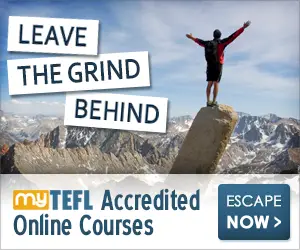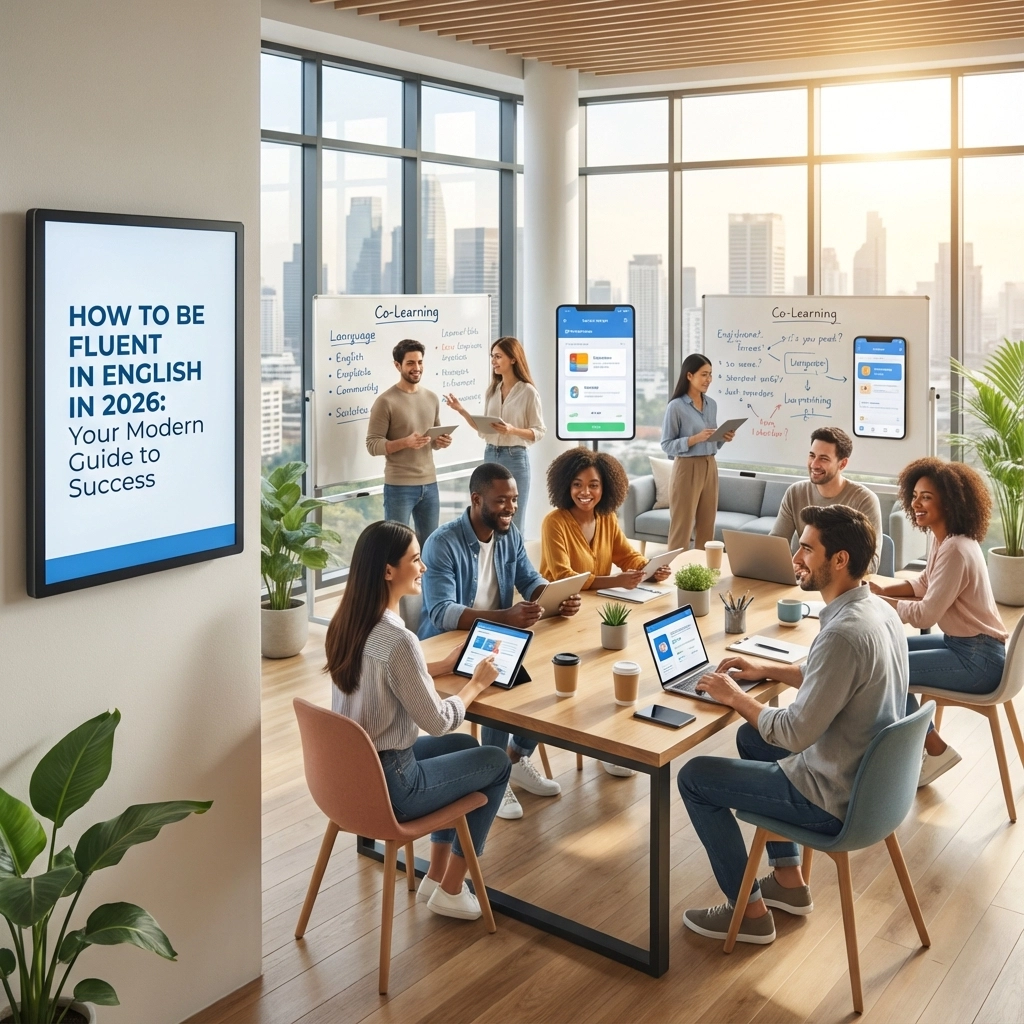Contents
Toggle
Meet David De’ Ath, founder, editor, and writer at Wonderful World English. With his extensive background as an English teacher, David provides valuable insights and practical tips on ESL for students and teachers alike.
Have you heard of TESOL while exploring English language teaching?
Let’s break down what it means and why it’s so important.
Picture this: you’re in a country where hardly anyone speaks English.
It would feel pretty lonely, right?
This is where TESOL comes in as a lifesaver!
TESOL stands for Teaching English to Speakers of Other Languages. It’s all about helping people who don’t speak English as their first language to learn it. This is super important because English is like a global key – it opens doors in business, culture, and even in making friends from all over the world.
By learning English, people can join conversations and opportunities they would otherwise miss out on.
And that’s why TESOL is a big deal.
It’s not just about teaching a language; it’s about connecting people and cultures.
As an ESL (English as a Second Language) teacher with loads of experience, I’m here to clear up any questions you have about TESOL.
Ready to learn more about this exciting field?
Let’s jump in!

TESOL Certificates
Wondering what TESOL is all about?
It’s pretty simple, yet super important.
Think of English as a universal language – it’s everywhere in business, science, and even international politics.
TESOL is all about helping people from all around the globe speak this universal language.
But TESOL is more than just teaching words and grammar.
It’s like building a bridge.
This bridge doesn’t just connect languages; it connects people, cultures, and countries.
Imagine making friends from different parts of the world or understanding a movie from another country – that’s the kind of connection TESOL aims to create.
Ready to explore how TESOL began?
Let’s dive into its origins and see how it became such a big deal in our world today.
1. History of TESOL
Ever wondered how TESOL started?
It’s a story of growth, change, and connecting the world.
Back in 1966, a group in Alexandria, Virginia, started the TESOL International Association.
Now, it’s the biggest group for English language teachers worldwide.
Originally, TESOL stood for Teachers of English to Speakers of Other Languages.
Its mission?
To help people who don’t speak English as their first language to communicate better in our global village.
Why did TESOL become a thing?
As more people moved around the world and countries worked more closely together, everyone needed to speak English, the language everyone seemed to understand.
As English became the go-to language for international chat, the need to teach it effectively became super important.
So, teachers and language experts started coming up with new ways to teach English, not just focusing on the language but also on cultural stuff – like how people think and behave in different parts of the world.
TESOL grew into more than just teaching English; it became a community of professionals all working towards the same goal – making English learning better and more consistent everywhere.
From its early days to now, TESOL has kept up with changes in who’s learning English, new technologies, and always stuck to its main goal: connecting people through language.
Are you thinking about teaching English as a Second Language (ESL)?
Check out the article below for some awesome insights into this rewarding career path!
Related Article: Why Did I Become an ESL Teacher? – Teacher’s Answer

2. TESOL Certifications
Have you ever considered teaching English to people who don’t speak it as their first language?
That’s where TESOL certifications come in handy.
These certifications are special courses made just for teachers.
They’re all about giving you the tools and know-how to teach English in a way that makes sense to people from all sorts of language backgrounds.
Teaching English isn’t always straightforward, especially when your students speak different languages at home.
TESOL certifications help you understand and overcome these challenges, making you a super-effective English teacher for learners from around the world.

Thinking about getting a TESOL certification?
Here’s why it’s a great idea:
- Travel and Teach Globally: With a TESOL certificate, you can teach English almost anywhere in the world! It’s your ticket to job opportunities in different countries, whether they speak English or not.
- Boost Your Teaching Skills: These certifications aren’t just pieces of paper. They actually make you a better teacher by teaching you special strategies for English as a Second Language (ESL) instruction.
- Show You’re Serious: Having a TESOL certificate tells everyone you’re a pro. It’s proof that you’ve got special skills and you’re dedicated to teaching English well.
- Climb the Career Ladder: If you’re already teaching or want to start, a TESOL certificate can help you get ahead in your career, opening doors to more advanced roles in English language teaching.
Curious about whether TESOL certificates ever expire? Scroll down to find out more in our guide!
Related Article: Do TESOL Certificates Expire – A Teacher’s Guide

TESOL vs. TEFL: Differences and Similarities
Ever heard of TESOL and TEFL in English language teaching?
They might sound similar, but they’ve got their own unique flavors.
Let’s break down what sets them apart and what they have in common.
TESOL (Teaching English to Speakers of Other Languages) and TEFL (Teaching English as a Foreign Language) are big names in the world of teaching English to those who don’t speak it as their first language.
While they might look the same at first glance, they’re a bit different once you get to know them.
Ready to dive in and see what makes TESOL and TEFL special in their own ways and how they’re similar, too?
Let’s get started!
- TESOL (Teaching English to Speakers of Other Languages) is a big umbrella term. It’s all about teaching English to people who don’t speak it as their first language. The cool thing about TESOL is it doesn’t matter where you’re teaching – it could be anywhere in the world.
- TEFL (Teaching English as a Foreign Language) has a more specific focus. It’s for teaching English in places where it’s not the main language people speak. Think of TEFL as the go-to approach when you’re teaching English in a country where most people speak a different language.
So, TESOL is a broad concept and TEFL zooms in on teaching English in non-English-speaking countries.
Related Article: Is TEFL Worth It? The Pros and Cons of TEFL Certificates

a) What TESOL and TEFL Have in Common:
- The Goal: Both TESOL and TEFL focus on helping people who don’t speak English as their first language to communicate better in English. They’re all about breaking down language barriers.
- Worldwide Opportunities: Whether you choose TESOL or TEFL, you’re opening doors to teaching English all over the globe. It’s about making the world a smaller, more connected place.
- Essential Teaching Skills: Both certifications cover the basics, like how to plan lessons, manage a classroom, and test your students’ progress.
b) How TESOL and TEFL Differ:
- Where You Teach:
- TESOL: This is more versatile. You could be teaching in English-speaking countries or places where English isn’t commonly spoken.
- TEFL: This one’s more specific. It’s mainly for teaching in countries where English isn’t the main language.
- Who You Teach:
- TESOL: You might find yourself teaching a wide mix of people – immigrants, refugees, or anyone in English-speaking or non-English-speaking areas.
- TEFL: This is usually for teaching people in their home country where English is a foreign language.
- What’s in the Course:
- TESOL: These courses can cover a wide range of situations – from teaching English as a Second Language (ESL) to English as a Foreign Language (EFL).
- TEFL: The focus is more on teaching strategies for places where English isn’t heard much outside the classroom.

c) Choosing Between TESOL and TEFL:
Your choice between TESOL and TEFL depends on your career goals, who you want to teach, and where you want to teach.
- If you’re keen on teaching in countries where English isn’t the main language, TEFL is your go-to.
- But if you want to cover a broader range of teaching settings, including English-speaking countries, then TESOL might be your best bet.
Interested in where a TEFL certificate can take you?
Scroll down to find out about the exciting places you can teach with TEFL!
Click here to find out what countries you can teach in with a TEFL certificate.

Conclusion
As we wrap up our journey through the world of TESOL, let’s remember just how awesome it is.
Since 1966, the TESOL International Association has brought people together by breaking down language barriers.
It’s like building bridges across the world with words!
TESOL certifications?
They’re like your toolkit for teaching English effectively, no matter where you are on the planet.
And when you think about TESOL vs. TEFL, remember they’re a bit different.
Depending on who you want to teach and where you want to teach, one might suit you better than the other.
At its heart, TESOL is about more than just teaching a language; it’s about opening doors to new experiences, cultures, and connections.
It’s about making the world a smaller, friendlier place.
We hope this guide has been super helpful. If you’ve got more questions, just give us a shout.
Thanks for reading, and here’s to your adventures in teaching English!
Have an amazing day!
Image Attribution: All images licensed via canva.com





